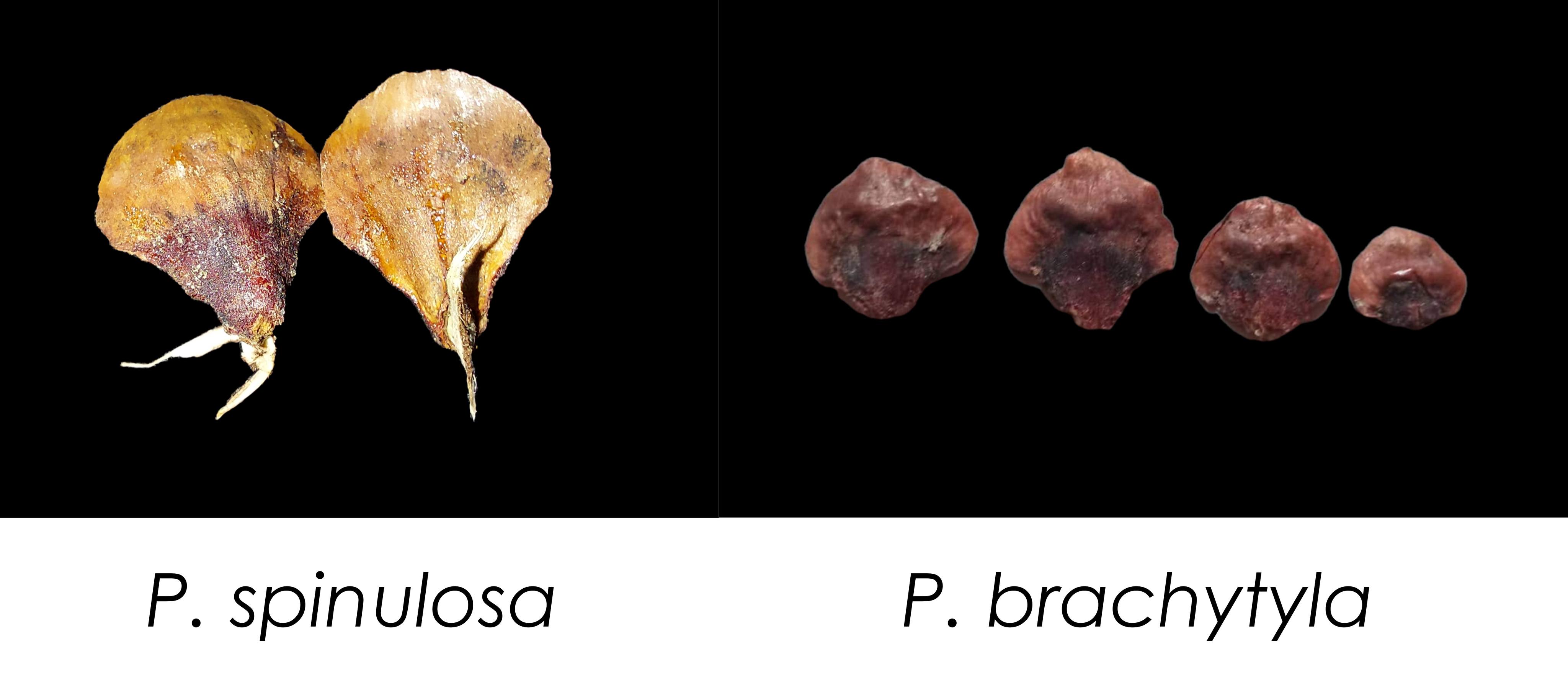Cones of the two species of Picea found in Bhutan
The Bhutan Himalayas harbor a very rich array of flora and fauna due to the diverse ecosystem and eco-floristic zones. The Flora of Bhutan has records of more than 5600 vascular plants. A total of 101 species of new plants were recorded in Bhutan between 2009 and 2017 while 16 plant species new to science were discovered in Bhutan from 2009 to 2017. Gymnosperms in Bhutan form a very small part of the flora but with many species which are very valuable as timber resources. While Blue Pine (Pinus wallichiana) forms an extensive stand in the inner dry valleys, the Chir Pine (Pinus roxburghii) forms pure stands in the lower arid valleys. Spruce is also a species of conifer that is found in mixed conifer forests and often form extensive pure stands.
Spruce or the genus Picea is represented by two species in Bhutan. The most common species of Picea found in Bhutan is the Eastern Himalayan Spruce (Picea spinulosa) and the less common one (Picea brachytyla) is so far recorded from the Bumthang district only. While both species appear similar, they can be distinguished using the scales of the female cones. The shape of the female cone scales of Picea spinulosa is obovate with a rounded tip while the female cone scales of Picea brachytyla are mostly rhombic with a blunt triangular apex. The differences are as visible in the figure below.

Comparision of the female cone scales of the two species of Picea
The Sargent's Spruce (Picea brachytyla) is currently classified as Vulnerable in the IUCN Red List of Threatened Species.
